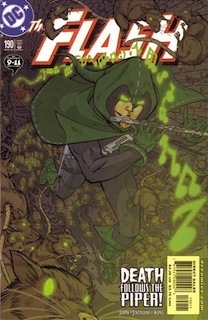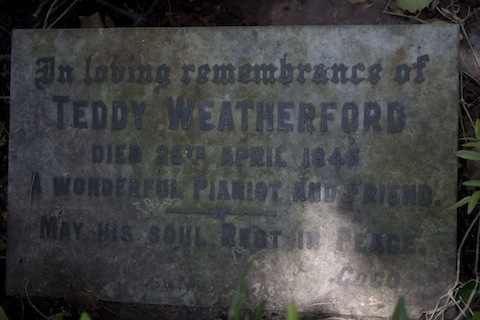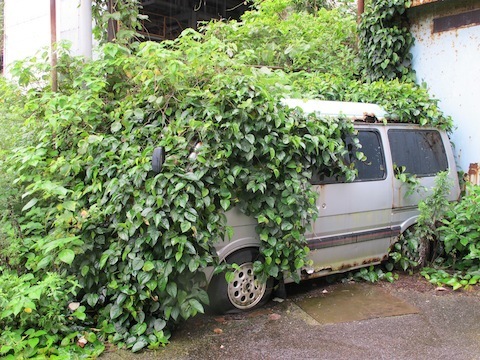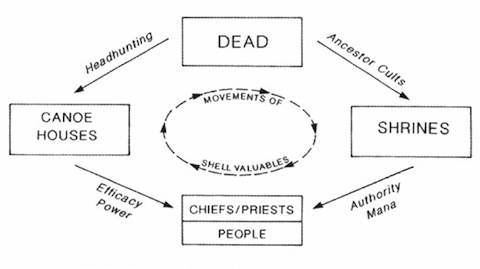Brendan I. Koerner's Blog, page 49
February 28, 2011
Rabbit in the Moon

Just one of those days, alas. Back tomorrow with a post on mercury mining in Kyrgyzstan; 'til then, bone up on the history of China's space shuttle, one of my favorite pieces of aeronautic vaporware.
February 25, 2011
The Simple Logic of Slumming
I have no plans to watch the Academy Awards this weekend; any enterprise that once saw fit to honor the abysmal Crash is simply not worthy of my time. But I do harbor some fond memories of ceremonies past, including the most hilarious no-show in the Oscars' history: Michael Caine's failure to accept his Hannah and Her Sisters Best Supporting Actor statuette. Caine was stuck in the Bahamas on that fateful evening, waiting for the Jaws: The Revenge crew to get the animatronic shark's eyes to roll back. The punchline, of course, is that Caine sacrifice his Oscar moment for a historically awful movie—a sequel so godawful that it was one of Bad Movie Friday's very first honorees.
Caine seems to have a good sense of humor about his Oscar whiff, but not when the talk turns to an indictment of his Jaws: The Revenge involvement. Unlike many actors who sheepishly try to explain away their paycheck-cashing performances as failed art rather than crave commerce, Caine makes no bones about his commercial impulses, as revealed in this recent Q&A:
Given how many great films you've made, does it disappoint you when people want to talk about the ones that didn't do so well?
No, what annoys me is when, as happened today, you're doing a day's worth of interviews and the very first question you're asked if, "Why did you make Jaws: The Revenge?" When things like that happen, the interview becomes very short indeed.
Just out of interest, how did you reply?
I just said what I've always said – I made it because they paid me a lot of money! It's like when people ask me why I made The Swarm – I made The Swarm because my mother needed a house to live in. Then I made Jaws IV because she was lonely and I needed to buy her a bigger house which she could live in with all of her friends. It's that simple.
If only the great William H. Macy could be similarly forthright about his involvement in Marmaduke.
February 24, 2011
The Money Pit
Back in 1985 or thereabouts, I made the worst business decision of my life: I traded all of my Star Wars action figures to a classmate, in exchange for a Fisher-Price Space Shuttle that made "beep beep" noises when a rubber buttons was depressed. To my credit, I realized within a matter of days that I had made a very unwise transaction, and I begged for a do-over. But my classmate informed me that Greedo and company had since been mangled and lost in his backyard. To this day, it brings great sadness to my heart to recall that early hoodwinking.
I'd like to think this early misstep was more a testament to my Space Shuttle obsession than raw stupidity. Like so many others who first became sentient during the Reagan Administration, I viewed the Space Shuttle as the ultimate emblem of mankind's mastery over the universe. And because I lived in Los Angeles, I was treated to a noticeable sonic boom whenever a shuttle re-entered the atmosphere, destined for a landing strip at one of Southern California's Air Force bases—bases where my father had served during his military career. You can only imagine how much I geeked out over the initial launch of Discovery, which will be lifting off for the very last time this afternoon.
Little did I know that the Space Shuttle was not initially conceived as a technological marvel, but rather something far less glamorous: a cost-cutting stratagem. When the project first burbled up from NASA's ideas lab in 1969, it found favor with the Nixon Administration solely because it promised to slash the space agency's budget. NASA Administrator Thomas O. Paine explained the logic in an interview that August—shortly after the very first artist's concept of the shuttle (above) was released to the public:
One of the fundamental points of the second decade of space has to be innovations that will drastically bring down the cost of space operations. And the space shuttle vehicle that I mentioned, capable of going from the surface of the earth into orbit and back again as a reusable vehicle, is one of the keys to low cost.
At the present time, the lowest cost we have of putting a vehicle into orbit is a giant Saturn 5, and hte cost of that is about $8,500 per pound. Now we're looking at the possibility of getting this down to $50 and eventually as low as $5 a pound.
Nixon bought NASA's sales pitch, but the agency never came close to making good on those lofty promises of reduced costs. Quite the opposite, in fact—the Space Shuttle ended up costing roughly $20,000 per pound (in 1969 dollars) to get into orbit and then back down again. Perhaps NASA should have gone with its initial idea and refueled the vehicle from an orbiting gas station, as shown above?
More Space Shuttle concept art can be found here; I particularly like the long-rumored Soviet knock-off.
February 23, 2011
Dreaming in the Trenches
From the 1915 paper that first legitimized the scientific study of combat-related trauma, Charles Samuel Myers' "A Contribution to the Study of Shell Shock":
Dec. 27th–While in hypnosis he gives the name of hte man in the same trench with him as K. He "sees" very clearly the position of the trenches, their shallowness and covering. He remembers that he had been two days in the reserve trenches before he was sent on Dec. 7th to the firing line. He says, "The explosion lifted us up and dropped us again. It seemed as if the ground underneath had been taken away. I was lying on my side, resting on my hand, when the shell came. I got my right hand loose, but my left was fixed behind a piece of fallen timber. At last I dropped off to sleep and had funny dreams of things at home. One dream in particular I have thought over many times since. I haven't been able to make out why I should dream of the young lady playing the piano. I don't know her name and don't think I have see her above twice.
Many more thoughts on combat trauma to come, as I'm just now wrapping up Achilles in Vietnam. The book's cover photo is enough to chill the blood and wound the heart.
February 22, 2011
Beware the Piper
 One of the core tenets of the scientific method is total transparency. An experiment cannot be trusted if it can't be replicated, so every step in the process must be documented and described for the masses. Those who resist these guidelines are often guilty of chicanery.
One of the core tenets of the scientific method is total transparency. An experiment cannot be trusted if it can't be replicated, so every step in the process must be documented and described for the masses. Those who resist these guidelines are often guilty of chicanery.
Thus the good people of Srinagar, Kashmir's gorgeous capital, should be skeptical of Khursheed Ahmad Mir. An exterminator who claims to possess advanced degrees in both business and agriculture, Mir has offered to help Srinagar with one of its most intractable problems: the huge number of stray dogs who roam the city's streets. The municipal government has previously attempted to cull the dogs with poison, but the killings have done nothing to halt the canine population's steady increase. Now along comes Mir, promising the truly miraculous: he will take care of the stray dog problem without resorting to violence:
"Mir claims to make dogs leave Kashmir Valley without killing them," said an official. He added: "This is subject to the condition that he does not do anything illegal and does not kill the stray dogs. Based on the success of the programme more areas can be allotted to him on experimental basis."
Mir's services were hired by J&K government in 2004 when a newborn baby was bit by rats at premier maternity hospital Lal Ded and the baby died the same night. "I have cleared Srinagar's premiere hospitals like Shri Maharaja Hari Singh and Lal Ded from rats. It takes us just 24 hours to shoo away rats in a hospital with our machines and resources. Earlier, a drive against rats would take fortnight to yield result," said lean Mir to HT.
"I cleared Rajasthan's main Jaipur city's several areas of monkeys long back and also cleared National Archives and Khuda Baksh buildings in Delhi," said Mir, director of 4-H-Hub (India), with expertise of two decades.
"Scientists also work with me," he added.
In a trial run on Sunday night, Mir said his team cleared his residential area in uptown Srinagar's Sanath Nagar of 150 dogs.
"I will not share the trick of the trade. But I assure we will take dogs away from Srinagar municipal limits without killing them. For ecological balance, we will keep a good number of doctors for necessary scavenging," said Mir.
If Mir truly does hold the secret to ridding a city of tens of thousands of feral dogs, he belongs on the worldwide lecture circuit. The finest minds in animal control have long been vexed by this challenge, and the general conclusion is that the only real solution is quite expensive: catching, neutering, and then releasing thousands of dogs. Yet here is Mir, claiming that he can accomplish the seemingly impossible—though he can't tell us how, despite the fact that he is slated to collect public funds for his efforts.
I wish Mir the best of luck with his endeavors. Yet I won't be surprised in the least to discover that his methods are no more imaginative than what Srinagar's elders have tried in the past.
February 21, 2011
The Steamboat Willie of Malaysia
All this solo parenting has reacquainted me with the role that animation plays in kids' development. In those moments that I've plopped Microkhan Jr. down in front of Team Umizoomi in order to secure a few minutes of peace, I've usually spent some time reminiscing about the cartoons that shaped my worldview. As previously noted, the third installement of Robotech was a huge influence—an early introduction to narratives that center on a physical journey. But I also was swayed by much lower-brow fare, particularly such Saturday morning trifles as Dungeons & Dragons and (regrettably) Kidd Video.
Curious khan that I am, thinking back on those formative shows has got me delving into the animation that shaped kids in other corners of the globe. That line of inquiry led me to the short above, which is widely recognized as the first animated film in Malaysia. Though completed in 1978, the cartoon didn't enjoy wide release until six years later, due to some political unpleasantness:
In the '80s, when Adib Adam took over as information minister, he was shown Malaysia's first animated fiction film, Hikayat Sang Kancil, done by Anandam Xavier who started work on it in the 60s and completed it in 1978.
However, the film was banned from being screened. Hassan explains it was because in that year, there was the disgraced politician Harun Idris' corruption case. In the film, an old man laments that when you are useful, people will make use of you, and when you are not, they will just discard you. Some people thought it was a direct reference to the case…
"Finally it was shown on Hari Raya 1984 and was an immediate hit," says Hassan. "Till today, 26 years later, people still fondly remember it and I'm gratified that in my lecture sessions, people come up to me to say how much they had enjoyed it and had even memorised the dialogue."
Worth watching, even if you don't possess the language skills to understand the dialogue. Knowing that this simple fable ticked off the Malaysian powers-that-be makes it extra-enjoyable; I'm sure that no American politician ever felt threatened by an episode of Kidd Video.
February 18, 2011
Coco's Lament

Thanks a million for putting up with sporadic, half-baked posting this week. Totally drained by Mr. Mom-ing it, a routine that left precious little time to formulate ideas into coherent paragraphs. But help is on the way, as the Grand Empress is making her way back to Atlah this very moment. All should be back to normal soon enough, with the aid of sleep and Dragon Stout.
Before I duck out for a weekend of rest and story outlining, though, I wanted to quickly bring Piano Demon back to the fore. If you haven't already checked out my tale of Teddy Weatherford, child coal miner turned Asian jazz sensation, please do—it's a cheap-and-easy way to support your humble narrator, plus you're guaranteed to learn far too much about the Shanghai opium trade, the Bengal famine, and the early-1930s wanderings of Langston Hughes. (Amazon version here; iOS version here.)
As noted in this excerpt, Weatherford's grave in Calcutta has nearly been lost to the elements. But the headstone (above) remains in decent shape, and raises a question that I never was able to answer: Who was "Coco"? His wife's name was Pansy, and she would be unlikely to refer to him as a "friend," so I doubt she was Coco. An Anglo-Indian fan of Weatherford's work, perhaps? A band member? If anyone can advise, please do so. But don't worry, I'm not holding out much hope that the Microkhan horde will have my desired intel. This feels like the sort of mystery that's meant to remain unsolved—sort of like the question of what happened to the Roanoke Colony. Or why all my socks keep disappearing in the laundry.
Genteel Decline

When I've looked at cases of urban decay in the past, I've typically focused on two types of hollowed-out human settlements: towns that were suddenly abandoned, and those that transformed from prosperous to troubled as their principal industries waned. But there's a third model of decay to be considered, and that is one in which a town goes gently into its good night. And there is no better example of this sort of demise than Ikeshima, which a treasured reader turned me on to after checking out last week's post about Hashima.
Whereas Hashima was deserted in a matter of weeks after its local coal mine closed, Ikeshima still claims approximately 220 residents despite the closing of its own coal operation in 2001. Without any economic engine, of course, there is nothing to attract new residents, or to retain those who might dream of something better than simply holding on to what they always knew. But a few loyalists do remain, and last year the great blog Spike Japan paid a visit to their beloved, increasingly decrepit hometown. The trip produced a bunch of haunting photos, as well as an interview with a rare local optimist who believes that redemption is right around the corner:
"What's the redevelopment plan?"
"Coal tourism," she exclaimed animatedly. "Do you know how much they're raking in down at Battleship Island?"
I confessed ignorance.
"Y600mn (about $7mn) a year."
"Well, in a couple of decades, you'll be in the same state of dereliction as Battleship Island," I blurted out, and immediately began to worry that I'd said the wrong thing. No one wants to bring ruination on themselves, after all, do they?
"Yes, that's what we're hoping! After all, nothing's been pulled down yet, except for a couple of apartment buildings by the shore. The problem is Mitsui Matsushima. They still own all the good bits. We've been trying to get the prefectural government to persuade them to cooperate, but we never get a clear answer, just keep getting rebuffed." She sighed.
"And the restaurant, well, I'm lucky if I do five or six bentos for the construction workers. It's barely enough for the electricity, to be honest." Her voice trailed off.
I, for one, see the appeal in coal tourism. But I'm an oddball.
February 17, 2011
Swounds
Absolutely nothing in the tank today—totally drained by a fifth consecutive day of solo parenting. Gotta use all available mental bandwidth to start outlining a forthcoming Wired opus 'bout an ingenious casino scam. You know the drill—enjoy the prime example of Malaysian movie music above, and catch you again as soon as I'm able.
February 16, 2011
"The Basest Treachery is Often Employed"

The ruins on Nusa Roviana, an island off the coast of New Georgia, include a baker's dozen worth of skull shrines. These mystical fixtures were vital to the political structure of Nusa Roviana's society, which centered on all-powerful chiefs who claimed an ability to communicate with deceased ancestors.
But the islands' inhabitants were not only interested in preserving their forebears skulls; they were also enthusiastic headhunters who believed it imprudent to proceed with any major endeavor without securing a fit offering for the gods. A British anthropologist described the community's headhunting zeal in 1899—as well as the raiders near total disregard for formal rules of engagement:
No canoe-house can be completed and no canoe launched with a head being obtained. They make long voyages in their large tomakos, or head-hunting canoes, for the purpose of securing heads, the chief hunting-ground at the present time being the two island of Choiseul and Isabel, ninety to one hundred miles away, which, however, are becoming somewhat "worked out." The basest treachery is often employed. They will at times visit a village as friends, and, after staying for a day or two, at a given signal turn upon their hosts, and either kill them or take them alive. Such a case occurred while I was at Rubiana. At other times they will surprise or cut off a party fishing on the reef, and no matter whether they are men, women, or children, the heads count. The heads, after being slightly smokes, are stuck up along the rafters of the roof in the canoe-houses, and I have myself counted thirteen recent heads in a house in Sisieta.
More on the purpose of skull accumulation on Nusa Roviana here.




